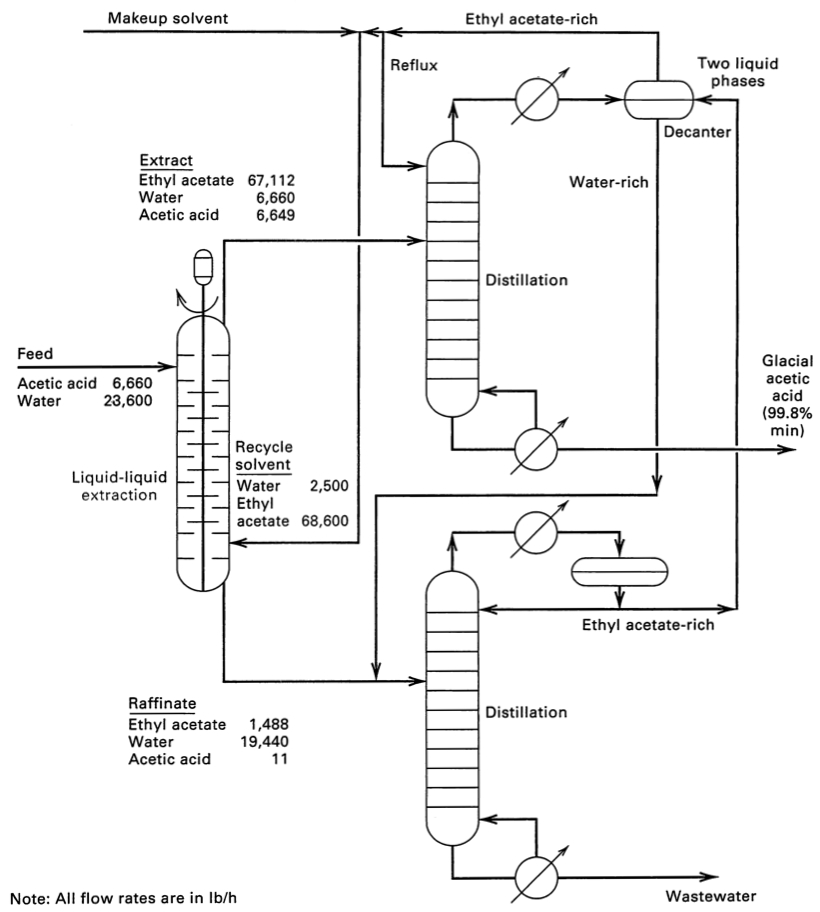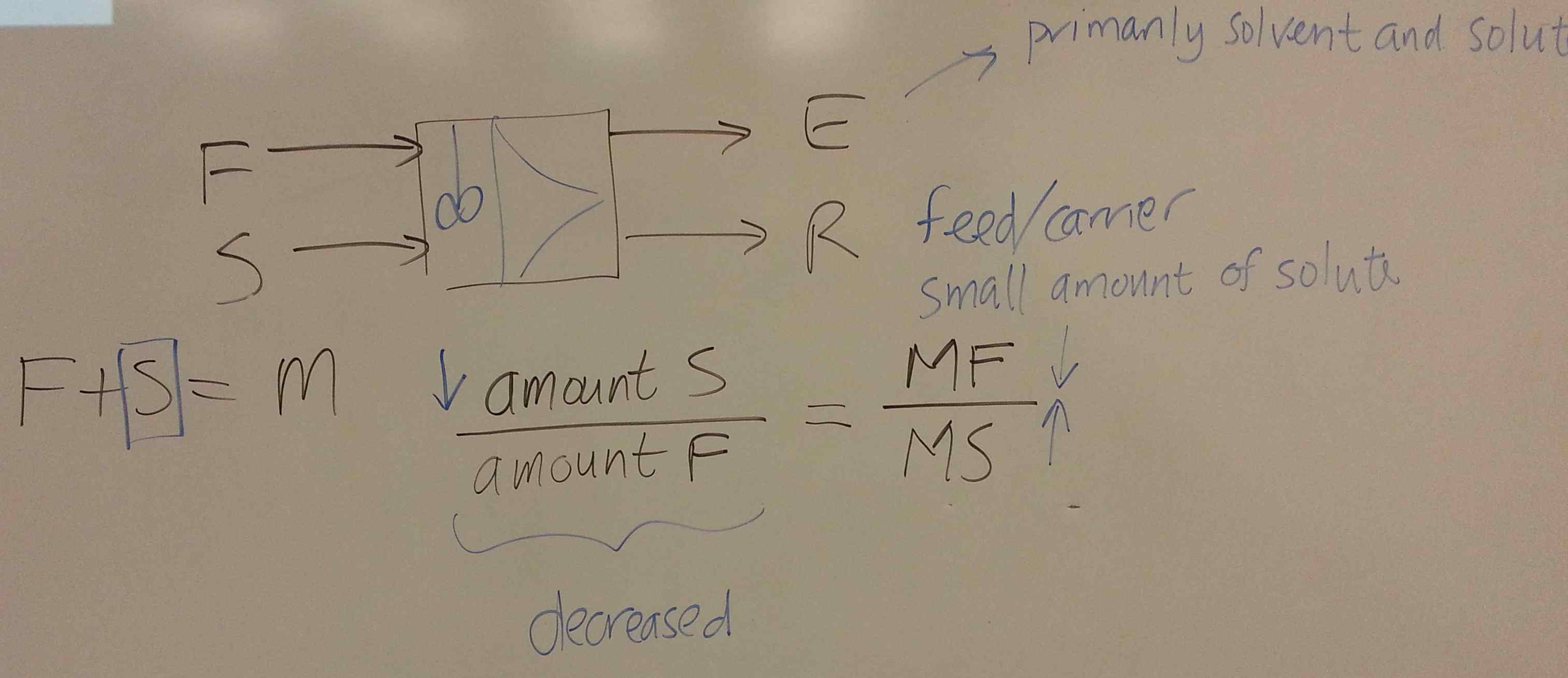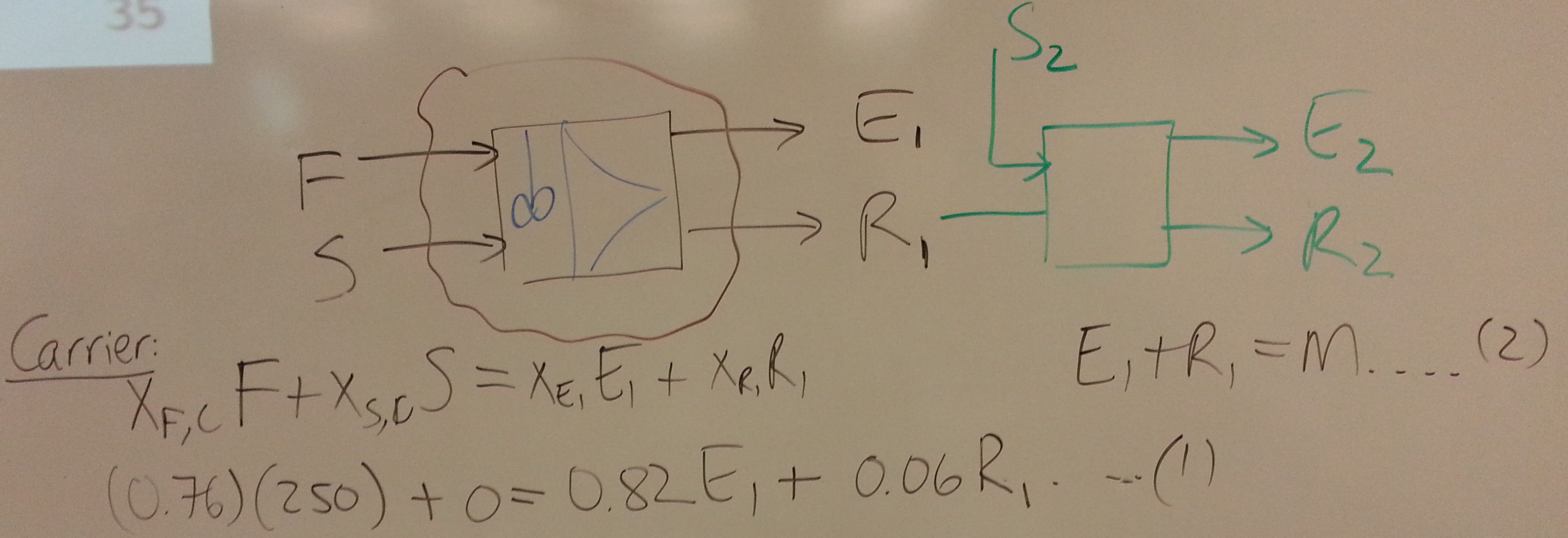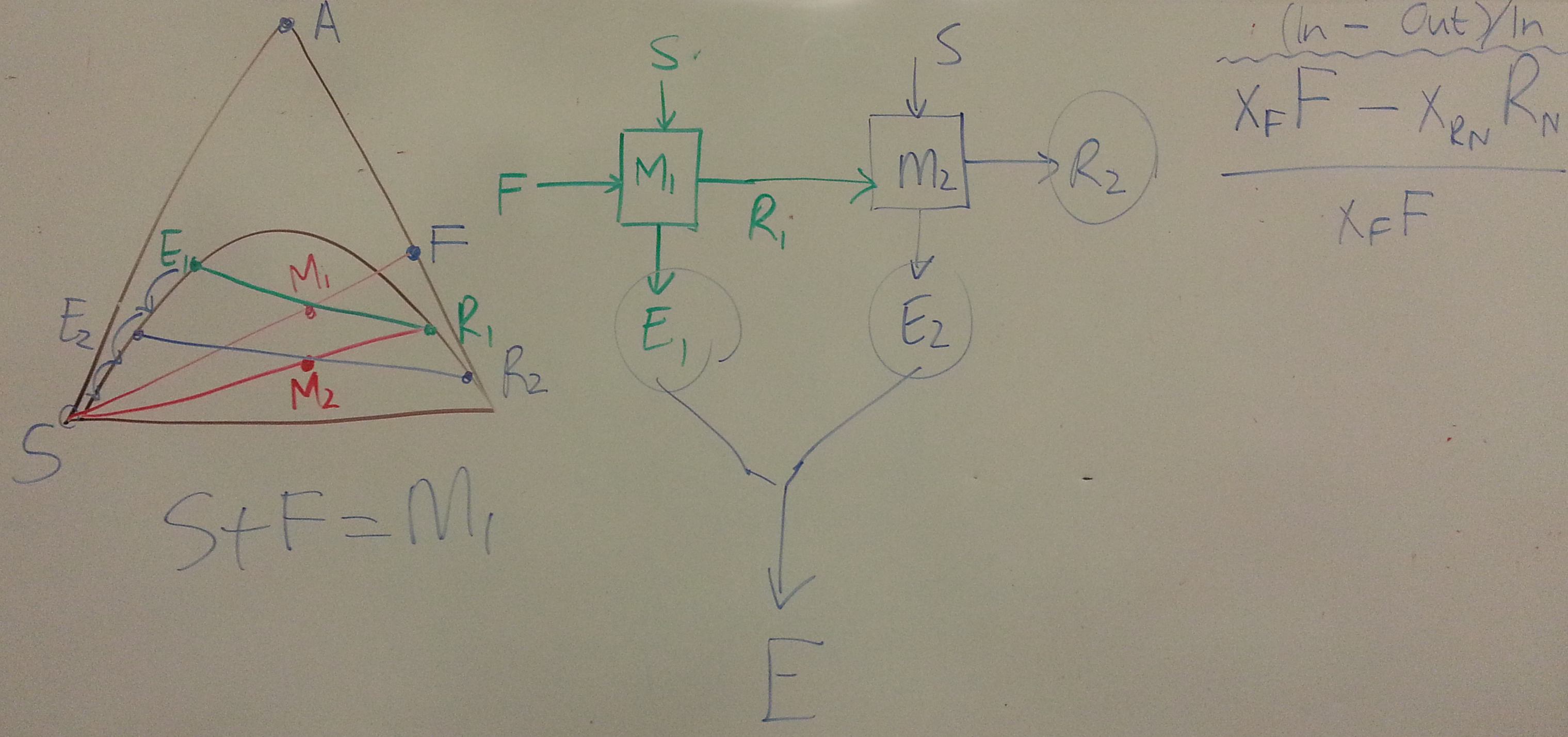Difference between revisions of "Liquid-liquid extraction - 2012"
Jump to navigation
Jump to search
Kevin Dunn (talk | contribs) m |
Kevin Dunn (talk | contribs) |
||
| Line 45: | Line 45: | ||
* An article on [http://learnche.mcmaster.ca/media/mcmaster/Bailes-Liquid-liquid-extraction.pdf liquid-liquid extraction] which describes the various units available. | * An article on [http://learnche.mcmaster.ca/media/mcmaster/Bailes-Liquid-liquid-extraction.pdf liquid-liquid extraction] which describes the various units available. | ||
* An article on [http://learnche.mcmaster.ca/media/mcmaster/Reissinger-Schroter--Selection-criteria-for-liquid-liquid-extraction-systems.pdf how to select among various liquid-liquid extraction units] | |||
* The flowsheet for separating acetic acid from water using ethyl acetate solvent. This flowsheet has the mass flow rates, to help contrast it to distillation. | * The flowsheet for separating acetic acid from water using ethyl acetate solvent. This flowsheet has the mass flow rates, to help contrast it to distillation. | ||
:[[Image:Acetic-acid-water-ethyl-acetate-flowsheet-Seader-3ed-p300.jpg|300px]] | :[[Image:Acetic-acid-water-ethyl-acetate-flowsheet-Seader-3ed-p300.jpg|300px]] <span style="color:#8822AA">''click to enlarge''</span> | ||
== Week 8 == | == Week 8 == | ||
Revision as of 16:57, 7 November 2012
| Class date(s): | 23 to 26 October 2012 | ||||
| |||||
| |||||
| |||||
| |||||
| |||||
References
Please use these references to read ahead, or for extra background reading on liquid-liquid extraction. In alphabetical order:
- Ghosh, R. "Principles of Bioseparations Engineering", Chapter 7, McMaster (reserve)
- Geankoplis, C.J. "Transport Processes and Separation Process Principles", Chapter 12 in 3rd and 4th edition, McMaster Libraries (reserve)
- Perry's Chemical Engineers' Handbook, Chapter 15, Direct link (McMaster subscription)
- Richardson and Harker, "Chemical Engineering, Volume 2", 5th edition, Chapter 13 ebook
- Schweitzer, "Handbook of Separation Techniques for Chemical Engineers", Chapter 1.9, McMaster library
- Seader, Henley and Roper, "Separation Process Principles", Chapter 8 in 2nd and 3rd edition McMaster Libraries (reserve)
Interesting applications / Enrichment materials
- An article on liquid-liquid extraction which describes the various units available.
- An article on how to select among various liquid-liquid extraction units
- The flowsheet for separating acetic acid from water using ethyl acetate solvent. This flowsheet has the mass flow rates, to help contrast it to distillation.
Week 8
23 Oct 2012 (08A)
- Slides for class
- Audio and video recording of the class.
25 Oct 2012 (08B)
- Slides for class
- Audio and video recording of the class.
26 Oct 2012 (08C)
- Slides for class
- Audio and video recording of the class.
- Three photos of the board during class
Week 9
30 Oct 2012 (09A)
We will consider single and multiple co-current extraction.
- Slides for class
- Audio and video recording of the class.
- Photo of the board during class
01 Nov 2012 (09B)
We should be able to wrap up the section by studying counter-current liquid-liquid extraction.
- Slides for class Please print slides 48 to 54 on large, single pages, to assist your learning.
- Audio and video recording of the class.
- Photo of the board during class
02 Nov 2012 (09C)
- Slides for class (slide 58)
- There will be no formal teaching in class today. You can ask questions about assignment 4, and there will be a tutorial question from assignment 5.
- Consider a system for which you have been given the ternary diagram (see slide 59 and 60).
- Calculate the flow and composition of the extract and raffinate from:
- 1st co-current stage, using a pure solvent flow of 50 kg/hr.
- 2nd co-current stage, with an additional solvent flow of 50 kg/hr.
- For the overall 2-stage system, find the:
- overall recovery
- overall concentration of combined extract streams
- Calculate the flow and composition of the extract and raffinate from:
- The next objective is to have a counter-current system so the raffinate leaving in the
- What is the maximum allowable solvent flow?
- Explain whether it's possible to achieve an extract stream of
- Show the construction on the ternary diagram for the number of equilibrium stages to achieve
- Plot on the same axes the concentrations in the extract and raffinate streams.





